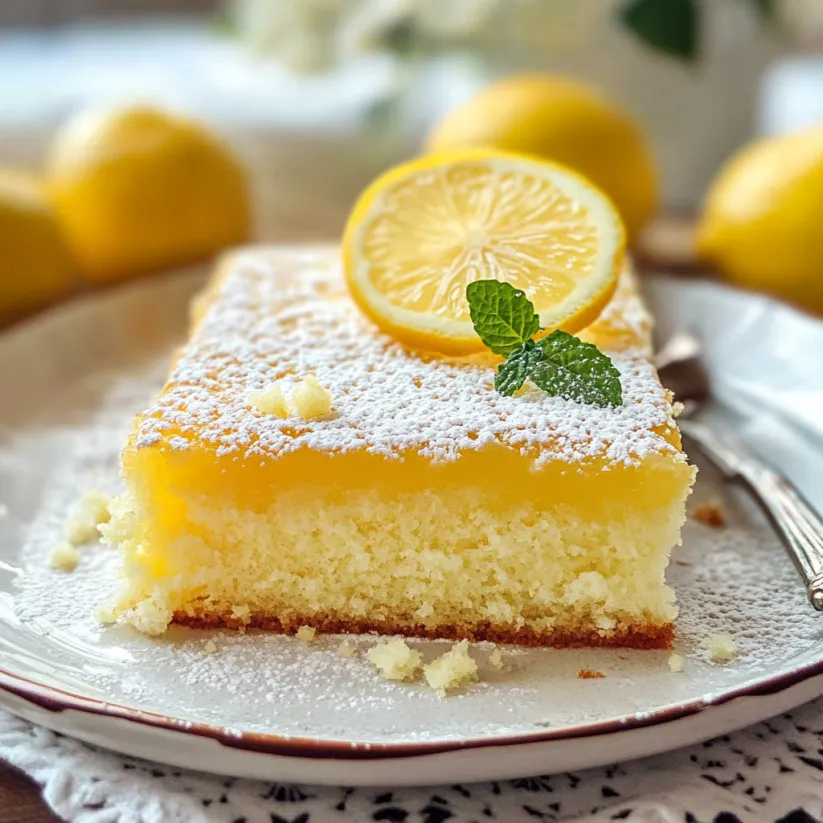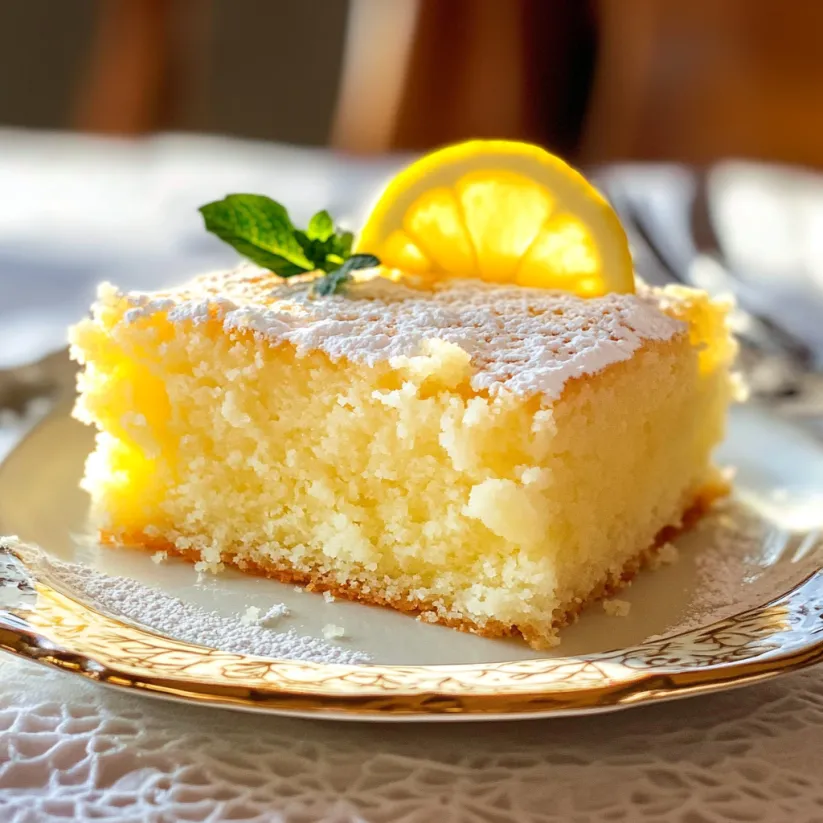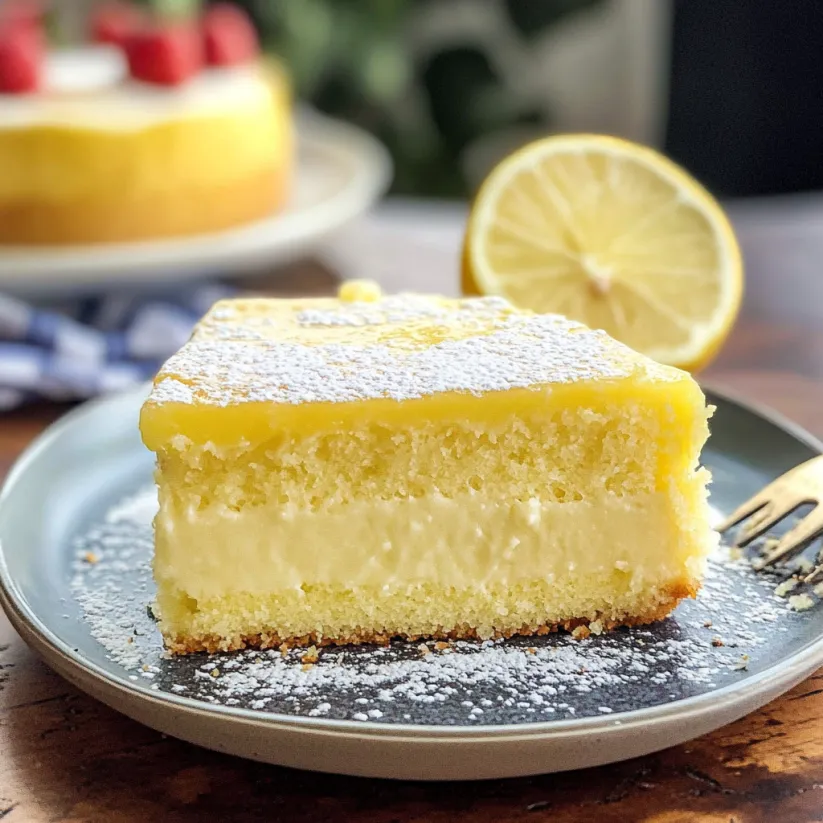 Save Pin
Save Pin
This incredibly delightful Lemon Magic Cake is not only bursting with zesty lemon flavor, but it also creates its own layers as it bakes. With just one batter, this cake magically transforms into three distinct textures a fluffy airy top, a creamy custard center, and a dense moist base.
I discovered this Romanian magic cake recipe during a baking experiment weekend and was absolutely blown away by how the layers separated during baking. Now it's my go to impressive dessert whenever I want to wow guests without spending hours in the kitchen.
Ingredients
- Eggs at room temperature Need to be separated for proper layer formation
- Sugar Provides sweetness to balance the tart lemon
- Unsalted butter melted Adds richness and tender texture
- Vanilla extract Enhances the overall flavor profile
- All purpose flour The foundation for the cake structure
- Fresh lemon juice Provides the bright citrus flavor critical to this recipe
- Lemon zest Contains the essential oils that give intense lemon aroma
- Lukewarm milk The temperature is crucial for proper batter development
- Powdered sugar For that beautiful finishing touch
Step-by-Step Instructions
- Prepare the Oven and Pan
- Preheat your oven to 325°F and prepare your baking dish by either greasing it or lining with parchment paper. The moderate temperature is crucial for allowing the layers to form properly without overbrowning the top.
- Whip the Egg Whites
- Beat the egg whites until they form stiff peaks. This creates air pockets that will help form the fluffy top layer of the cake. Set them aside carefully to fold in later.
- Mix the Base Batter
- Beat the egg yolks with sugar until the mixture becomes light yellow and fluffy. This step incorporates air and helps create a tender texture. Add the melted butter and vanilla extract and continue mixing to create a rich base.
- Add Dry and Wet Ingredients
- Incorporate the flour into your mixture until smooth, then add your fresh lemon juice and zest. The acid from the lemon juice will help with the separation of layers. Gradually add the lukewarm milk while mixing continuously to create a very thin batter.
- Fold in Egg Whites
- Using a gentle folding motion, incorporate the whipped egg whites a third at a time. The key here is to not overmix. You should still see white streaks of egg whites in the batter which is exactly what you want.
- Bake to Perfection
- Pour the batter into your prepared pan and bake for 40 to 70 minutes. The wide time range accounts for oven variations. The cake is done when the top is lightly golden and feels firm to the touch.
- Finish and Serve
- Allow the cake to cool completely before dusting with powdered sugar. This final touch adds sweetness and creates a beautiful presentation that highlights the lemon color beneath.
 Save Pin
Save Pin
The lemon zest is truly the secret hero of this recipe. I've found that using a microplane grater to remove just the yellow part of the lemon peel gives the most aromatic results without any bitterness from the white pith. My grandmother taught me this technique when I was young, and it's transformative for any citrus dessert.
The Magic Behind the Layers
The science behind this cake is fascinating. The different densities of ingredients naturally separate during baking. The flour sinks to create the dense bottom layer, the middle forms a custard as the eggs and milk set, and the whipped egg whites rise to create the cake layer on top. The varying baking temperatures throughout the cake contribute to this separation process.
Storage and Making Ahead
This magic cake actually improves with time as the flavors meld and the layers become more pronounced. Store it covered in the refrigerator for up to a week, though it rarely lasts that long in my house. The cake can also be frozen for up to three months if wrapped well in plastic wrap and placed in an airtight container.
Perfecting Your Technique
The success of this cake depends largely on temperature control. All ingredients should be at room temperature, especially the eggs which separate more easily and whip better when not cold. The milk should be lukewarm around 95°F to 105°F which helps maintain the batter temperature and supports proper layer formation.
Serving Suggestions
This cake needs no accompaniment, but if you want to elevate it further, serve with a dollop of lightly whipped cream or a small scoop of vanilla bean ice cream. Fresh berries particularly raspberries or blueberries make a beautiful and complementary garnish that balances the sweetness with additional tartness.
 Save Pin
Save Pin
Commonly Asked Questions
- → Why does the cake separate into three layers?
The separation happens during baking due to the different densities of ingredients. The flour settles at the bottom creating a dense base, the egg yolks form a custard middle, and the whipped egg whites rise to create the airy top layer.
- → Can I use bottled lemon juice instead of fresh?
While fresh lemon juice provides the best flavor, bottled juice can work in a pinch. However, you'll definitely want fresh lemon zest as there's no substitute for the aromatic oils it contains.
- → Why is the milk temperature important?
Lukewarm milk (95°F-105°F) ensures even distribution of ingredients without cooking the eggs prematurely or solidifying the melted butter, which is crucial for achieving the proper separation of layers during baking.
- → How do I know when the cake is done baking?
The cake is done when the top is lightly golden and firm to the touch. Baking times vary significantly between ovens, so start checking at 40 minutes. The middle layer should remain custard-like but not liquid.
- → Why does the baking time vary so much?
Oven temperature accuracy, the specific baking dish used, and even room temperature can affect baking time. The cake's unique three-layer structure also requires precision—it needs enough time to set properly without overbaking.
- → Can I make this cake ahead of time?
Yes! This cake actually improves after refrigeration as the flavors develop and the layers set more distinctly. It keeps well in the refrigerator for up to a week.
